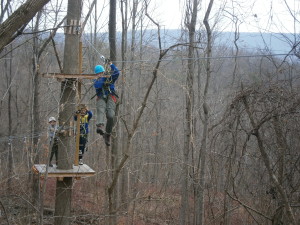The potential for significant risk during a Scouting activity is generally not something that a parent would find comforting, if not disagreeable, particularly if such potential is significant. There are several Scouting stories on the web which suggest that one or more Scouts were subjected, inadvertently or not, to significant risk during an outdoor activity, which ultimately resulted in tragedy (be it on land or water). While adults may be found competent to assume such risk for themselves, such is not the case for youth.
From a risk management standpoint, it is important to remember that a contemplated outdoor activity should be aligned with the “mission” of Scouting (“to prepare young people to make ethical and moral choices over their lifetimes by instilling in them the values of the Scout Oath and Law”). Units should conduct activities consistent with the mission of Scouting, as that is not only what is expected, but assists in avoiding unnecessary incidents and potential liability, thus maximizing the overall experience.

Participation in an activity which is not aligned with the mission of Scouting may exceed the abilities and training of both Scouts and adults, unnecessarily increase risk, and constitute a pointless challenge which should be avoided, or is actually prohibited by the Guide to Safe Scouting.
In other words, outdoor activities that have no relation to the mission of Scouting (risky adventure for the sake of risky adventure) should have little place in the outdoor program, particularly given the unnecessary risks required to be assumed by youthful Scouts (and unknowingly consented to by their parents).
Activities which generally are aligned with the mission of Scouting include, of course, activities such as kayaking, cycling, cooking, canoeing, swimming, horseback riding, scuba, rowing, sailing, climbing, camping, hiking, snow sports, COPE programs, ropes courses, or high adventure events, to name but a few, practiced in accordance with the Eight Methods of Scouting.
But, such activities can be conducted in a manner by which they are no longer aligned with the mission of Scouting!
Such as, for example, when BSA’s age-appropriate guidelines are ignored, or which require a level of skill and/or maturity not able to be provided by the participants, or which involve conditions beyond which a reasonable person would find appropriate. And, of course, activities prohibited by the Guide to Safe Scouting, or which are not conducted in accordance with BSA policy, are clearly not aligned with the mission of Scouting.
Injuries which occur under such circumstances constitute needless suffering by all involved, and particularly if suffered by youth, and potential liability for some, and should be avoided.
Indeed, BSA’s “Scouter Code of Conduct” states “I will exercise sound judgment and demonstrate good leadership and use the Scouting program for its intended purpose consistent with the mission of the Boy Scouts of America.” This applies to the planning and conduct of outdoor activities.
Safe Scouting!
